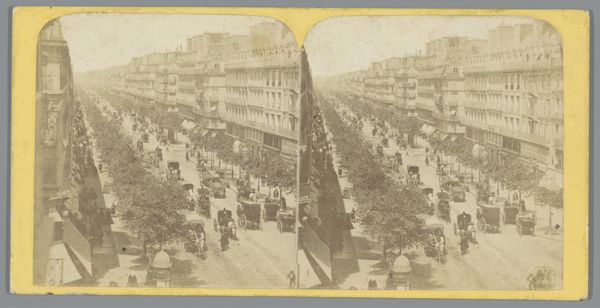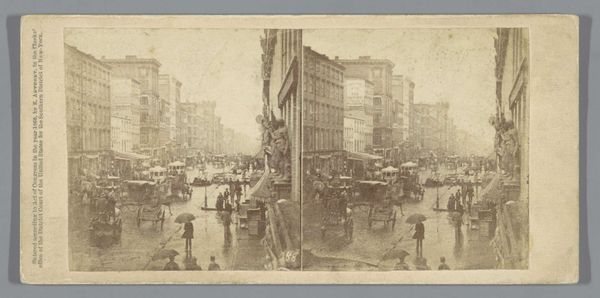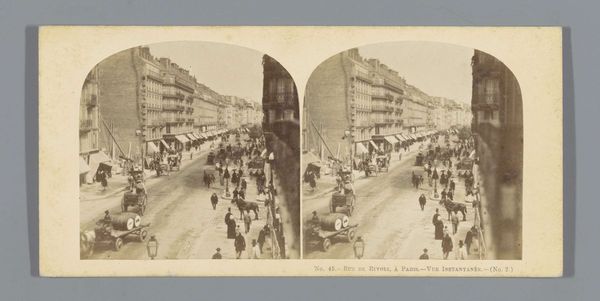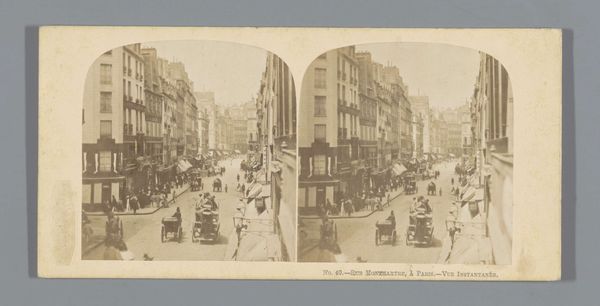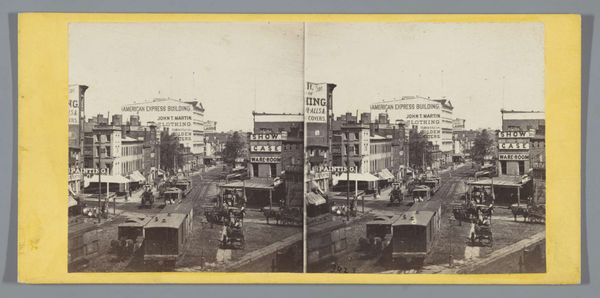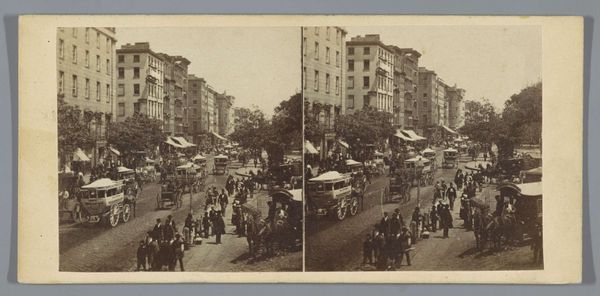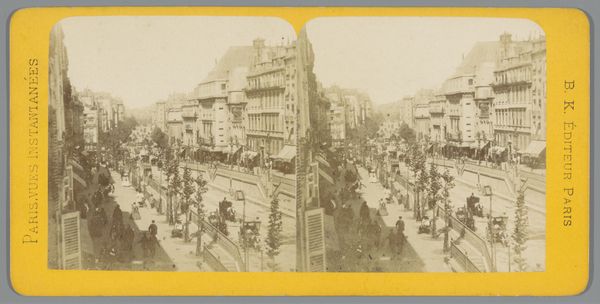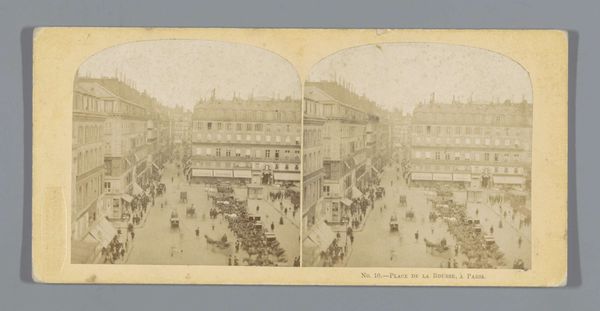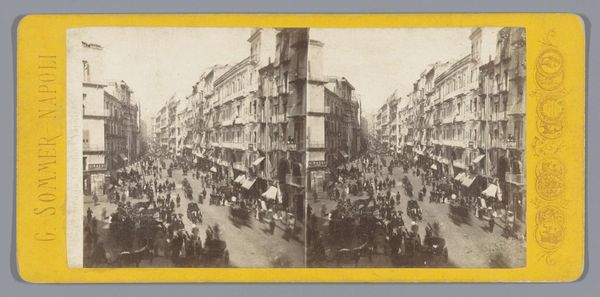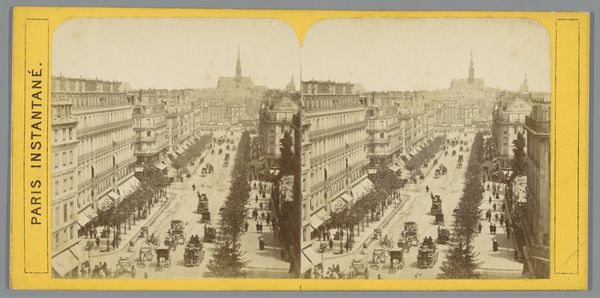
Dimensions: height 85 mm, width 170 mm
Copyright: Rijks Museum: Open Domain
Curator: What an absolutely marvelous example of early street photography! This piece, entitled "Gezicht op de Boulevard de Strasbourg te Parijs," was captured by the London Stereoscopic Company sometime between 1850 and 1880. It presents a bustling Parisian street scene. What are your initial thoughts? Editor: There's something immediately captivating about the quiet energy here. It’s like a freeze-frame of a bustling city, a testament to a specific moment yet timeless in its depiction of urban life and, like a faded memory, tinted brown with age. Curator: Absolutely. The composition really draws you in. It's fascinating how they've managed to convey such depth using a stereoscopic format. I am quite moved by the historical and theoretical perspectives behind pictorialism, and these kinds of street photographs bring forth an insightful reflection on social change. Editor: Pictorialism as a conscious choice, framing the street as a carefully composed painting rather than a candid capture... it’s intriguing. And considering the social context—Paris in the throes of modernization, the rise of the bourgeoisie... this image subtly captures those tensions, those shifting identities in urban space. The lack of precise definition somehow mirrors the anonymity of city life itself. Curator: Precisely! And consider the subjects themselves. Those figures, caught mid-stride, their faces obscured – they become emblematic of the rapidly expanding urban populace. Photography at this time was often used to both celebrate and try to come to terms with these major demographic and cultural shifts, especially in a place like Paris. What do you reckon this photography sought to capture about French identity? Editor: Perhaps it's less about defining a singular French identity, and more about exploring the fragmented nature of modern identity within the French context. This photo embodies the intersection of social class and public space. Consider, too, that while it showcases this elegant boulevard, who gets to partake? Whose stories get recorded, and whose fade into the background? It hints at broader issues of representation, of power, embedded in seemingly simple images. Curator: Yes, you are right. Photography as power – something for us to never ignore. Thinking of modern art, photography’s rise pushed artists like Monet and Renoir toward impressionism, challenging us to look beyond realism toward emotion. But, back to this beautiful street! Thank you for the interesting discussion. Editor: A crucial reminder, indeed. This is a window to the past with echoes that still resonate.
Comments
No comments
Be the first to comment and join the conversation on the ultimate creative platform.
